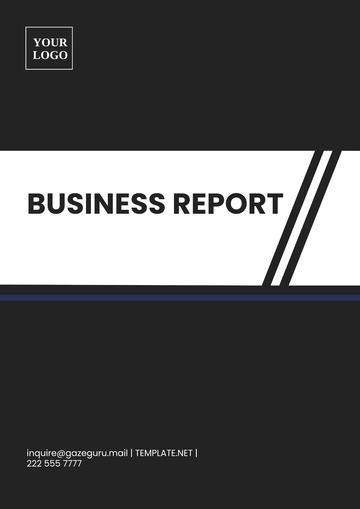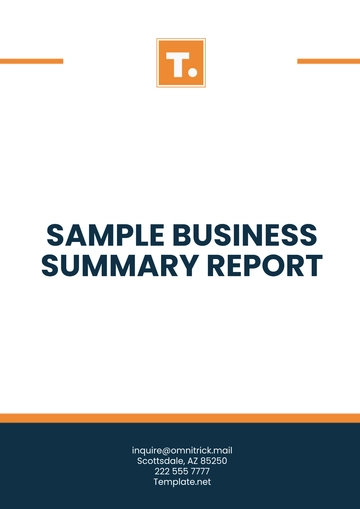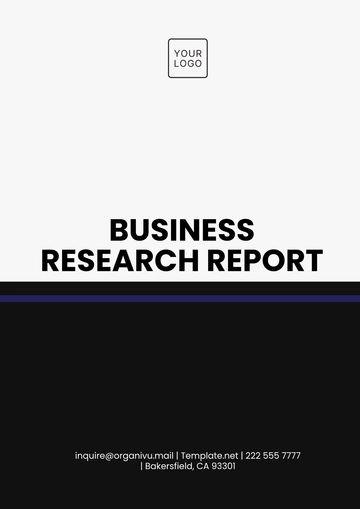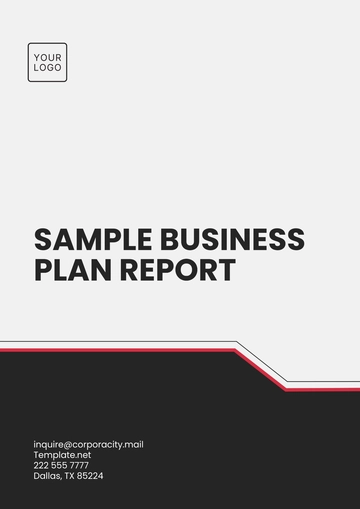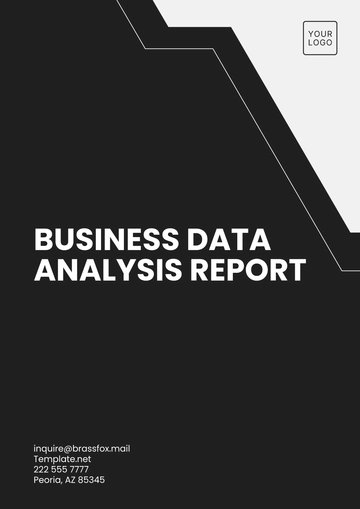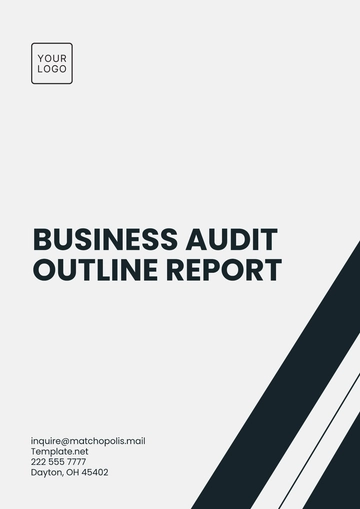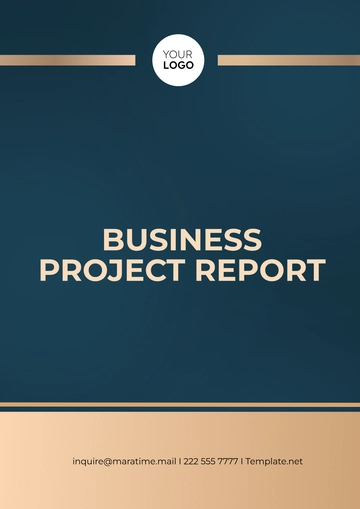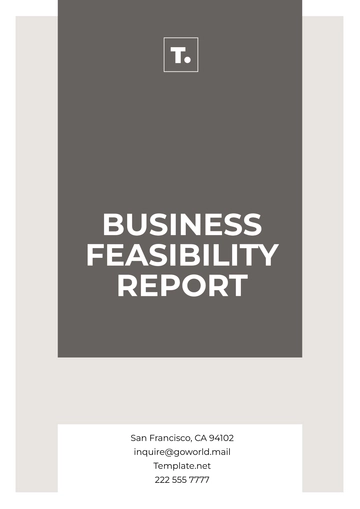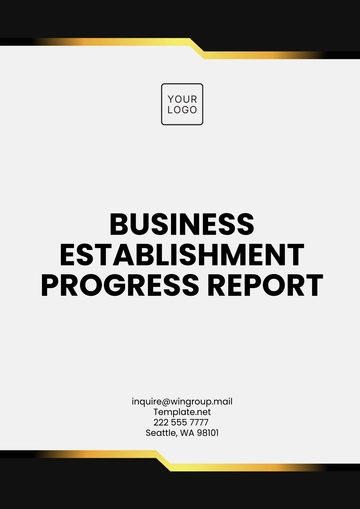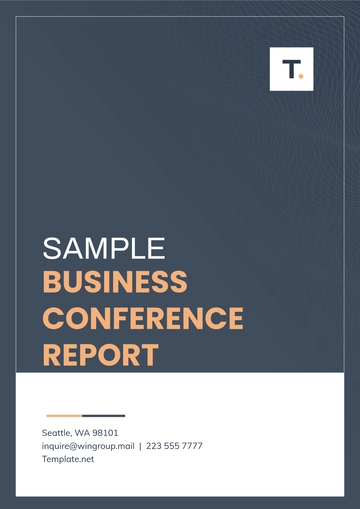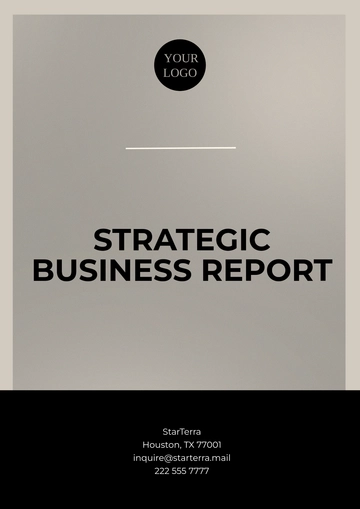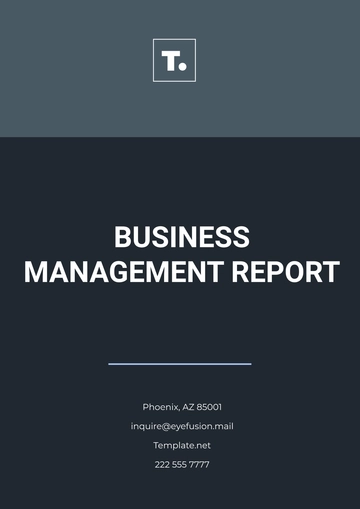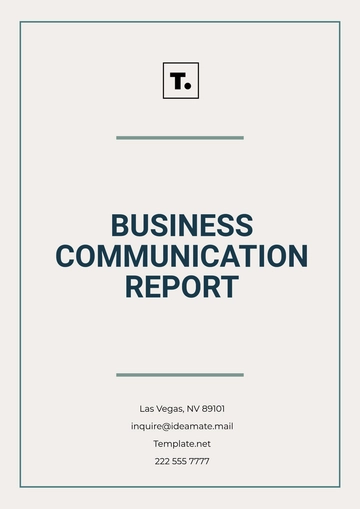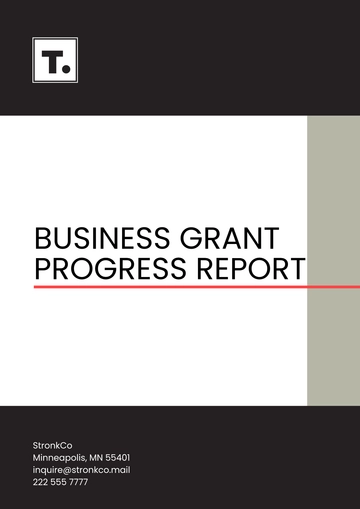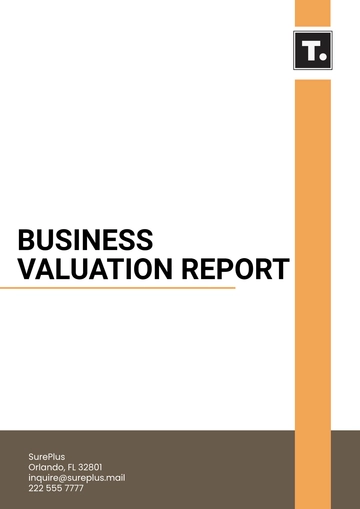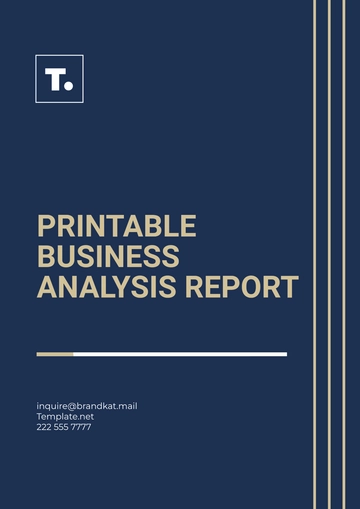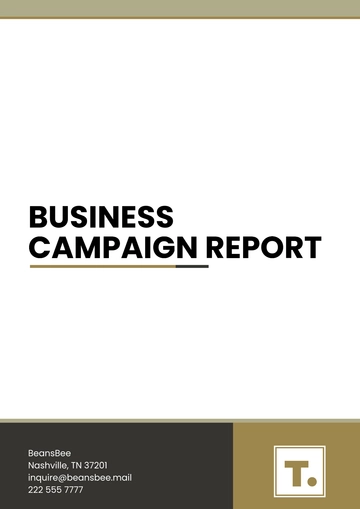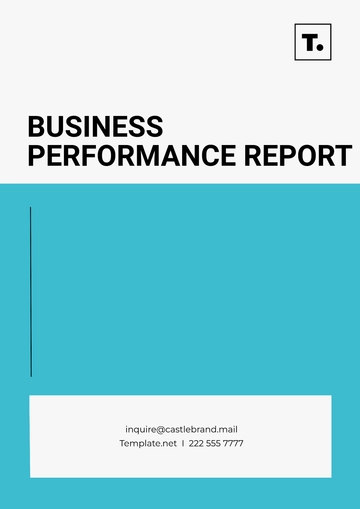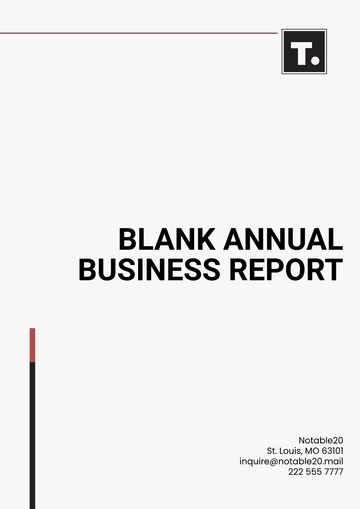Free Sales Feasibility Study on New Reporting Formats
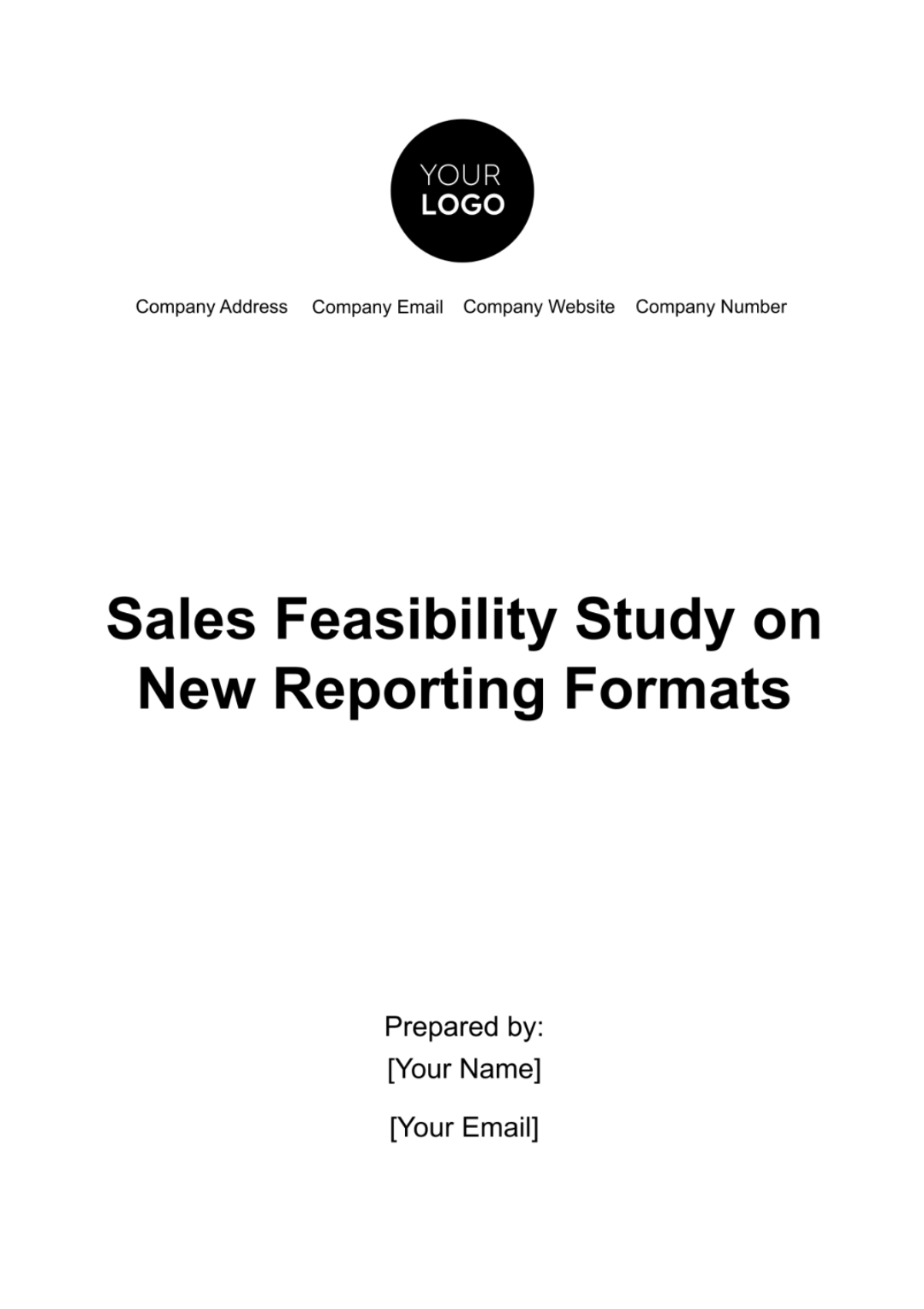
1. Executive Summary
The Executive Summary serves as a concise overview of the Sales Feasibility Study on New Reporting Formats. It encapsulates the essence of the study, providing context to the readers. In this section, we delve deeper into the background to ensure a comprehensive understanding.
As [Your Company Name] has continually strived for excellence, it has become apparent that our existing reporting formats may no longer suffice in meeting the demands of modern business operations.
A. Objective
The primary objective of this Sales Feasibility Study is to assess the feasibility of implementing new reporting formats within [Your Company Name]. To gain a comprehensive understanding of the objectives, let's break down the key components:
Evaluate Existing Reporting Formats: This evaluation entails a comprehensive analysis of the structure, data sources, and functionalities of our existing reports.
Identify Market Trends and Consumer Expectations: We aim to identify and analyze emerging market trends related to reporting formats.
Assess Financial Viability: This entails a detailed cost analysis, revenue projections, and an evaluation of the potential return on investment (ROI).
Evaluate Technical Feasibility: This includes an evaluation of the necessary technology requirements, considerations regarding data security, and an assessment of scalability to ensure that our reporting systems can adapt to future growth.
2. Current Reporting Formats
Our current reporting formats are primarily based on traditional templates and tools that have served us well over the years. These formats encompass a range of reports, including financial statements, performance reports, sales reports, and operational metrics. The reporting process involves collecting data from various departments and sources, which is then compiled, formatted, and presented in predefined templates.
Key Features of Current Reporting Formats:
Structured Templates: Our current reporting templates are highly structured, with fixed layouts and standardized sections for different types of reports. This ensures consistency in reporting but may limit flexibility.
Data Sources: Data for these reports is sourced from various departments, including finance, sales, marketing, and operations. Integration of data from disparate sources can be time-consuming.
Frequency: Reporting is typically done on a monthly and quarterly basis, with some reports being generated annually. This periodicity may not provide real-time insights.
Visual Presentation: The current formats emphasize textual data and lack interactive visualizations or dynamic elements.
Distribution: Reports are disseminated through email or shared network drives, making it necessary for recipients to manually access and review the reports.
A. Advantages
While there is a need for change, it is important to acknowledge the strengths and advantages of our current reporting formats. Recognizing these aspects can help us determine which elements should be retained or adapted in the new reporting system:
Consistency: The structured templates ensure a consistent format across reports, making it easier for stakeholders to navigate and understand.
Historical Data: The existing formats have facilitated the storage of historical data, allowing for trend analysis and benchmarking.
Familiarity: Our teams are well-acquainted with the current reporting formats, which reduces the learning curve for users.
Regulatory Compliance: The existing formats have successfully met regulatory requirements in the past.
B. Limitations
While the current reporting formats have served their purpose, they also exhibit certain limitations that necessitate a shift to new reporting formats:
Lack of Interactivity: The static nature of our current reports limits the ability to interact with data, hindering quick decision-making and analysis.
Data Integration Challenges: Integrating data from multiple sources is time-consuming and prone to errors, leading to delays and inaccuracies in reporting.
Limited Visualization: Our reports rely heavily on text and tables, missing out on the benefits of visual data representation, which can enhance comprehension.
Timeliness: The periodic reporting cycle does not provide real-time insights, which are increasingly crucial in a fast-paced business environment.
Accessibility: Accessing and sharing reports through email or network drives can be cumbersome, especially for remote or mobile users.
3. Proposed New Reporting Formats
This section outlines the proposed new reporting formats that have been considered as part of this feasibility study. It is essential to provide a clear picture of what these formats entail and how they differ from the existing ones.
A. Characteristics of Proposed New Reporting Formats
The new reporting formats will feature interactive dashboards that allow users to explore data in real-time. These dashboards will provide customizable views and dynamic visualizations.
Data Integration: We intend to streamline data integration processes, utilizing modern data integration tools to aggregate data seamlessly from various sources.
Real-time Reporting: The new formats will support real-time reporting, enabling stakeholders to access up-to-the-minute data and insights.
Visualizations: Emphasis will be placed on data visualization, with the inclusion of charts, graphs, and other visual elements that enhance data interpretation.
Mobile Accessibility: The new reporting formats will be designed with mobile accessibility in mind, ensuring that users can access reports on-the-go.
B. Benefits
The proposed new reporting formats offer a multitude of benefits that align with the evolving needs of [Your Company Name]:
Enhanced Decision-Making: Real-time data and interactive dashboards empower decision-makers with immediate insights, facilitating quicker and more informed choices.
Improved Data Accuracy: Streamlined data integration reduces errors and ensures data accuracy, increasing the reliability of reports.
User Engagement: Interactive visualizations make data more engaging and comprehensible for users, increasing user satisfaction.
Agility: Real-time reporting allows [Your Company Name] to adapt swiftly to changing market conditions and customer needs.
Accessibility: Mobile accessibility ensures that reports are accessible anytime, anywhere, catering to the needs of remote and mobile users.
4. Market Analysis
A. Market Trends
In this section, we delve into an analysis of the current market trends related to reporting formats. Understanding these trends is essential to make informed decisions about transitioning to new reporting formats.
Data Visualization Dominance: Market trends indicate a growing preference for data visualization over traditional text-based reporting. Organizations that leverage visual data representation experience improved comprehension and decision-making.
Real-Time Insights: Businesses are increasingly embracing real-time reporting to gain a competitive edge. The ability to access up-to-the-minute data is becoming a standard requirement in today's fast-paced market environment.
User-Centric Reporting: Consumer expectations are evolving, with a demand for personalized and user-centric reporting formats. Tailoring reports to individual user needs and preferences is gaining prominence.
Competitive Advantage: Companies that adopt modern reporting formats are often perceived as more innovative and agile in their decision-making processes. This can provide a distinct competitive advantage.
B. Competitor Analysis
To gain insights into our competitive industry, we have conducted a thorough analysis of our industry peers and competitors. This analysis aims to identify the reporting formats and tools they are utilizing and the advantages they may have gained.
[Tech Firm Name 1]: [Tech Firm Name 1] has transitioned to interactive dashboards that provide real-time performance metrics to stakeholders. This has improved their decision-making and customer responsiveness.
[Tech Firm Name 2]: [Tech Firm Name 2] employs data visualization tools that enable them to quickly identify market trends and adapt their strategies accordingly, giving them a competitive edge.
[Tech Firm Name 3]: [Tech Firm Name 3] has implemented mobile-accessible reporting formats, enhancing accessibility for their remote workforce and field teams.
C. Customer Feedback
We have actively sought feedback from our customers to gauge their preferences and expectations regarding reporting formats. Customer feedback is invaluable in shaping our decision-making process.
Customer Surveys: Surveys conducted among our key customers indicate a desire for more user-friendly and visually appealing reports.
Requests for Real-Time Data: Several customers have expressed interest in accessing real-time data to make timely decisions.
Customization Requests: Customers have shown a preference for reports that can be tailored to their specific needs and requirements.
5. Financial Feasibility
A. Cost Analysis
Development Costs (Estimated)
Cost Category | Estimated Cost (USD) |
Software Licenses | $50,000 |
Design and UX | $30,000 |
Data Integration Tools | $20,000 |
Total Development Costs | $100,000 |
Training Expenses (Annual)
Cost Category | Estimated Cost (USD) |
Employee Training | $15,000 |
Total Training Expenses | $15,000 |
Data Integration Costs (Estimated)
Cost Category | Estimated Cost (USD) |
Data Integration Platform | $25,000 |
Total Integration Costs | $25,000 |
Maintenance and Support (Annual)
Cost Category | Estimated Cost (USD) |
Software Maintenance | $10,000 |
Technical Support | $8,000 |
6. Revenue Projections
Potential Revenue Increase (Yearly)
Year | Potential Revenue Increase (USD) |
1 | $100,000 |
2 | $150,000 |
3 | $200,000 |
Cost Savings (Yearly)
Year | Cost Savings (USD) |
1 | $20,000 |
2 | $30,000 |
3 | $40,000 |
C. Return on Investment (ROI)
ROI Calculation (Yearly)
Year | Benefits (USD) | Costs (USD) | ROI (%) |
1 | $120,000 | $143,000 | -16.08% |
2 | $180,000 | $173,000 | 4.05% |
3 | $240,000 | $191,000 | 25.65% |
7. Technical Feasibility
A. Technology Requirements
We provide an in-depth analysis of the technology requirements associated with implementing the proposed new reporting formats. It is essential to ensure that our technological infrastructure can support these changes effectively.
Hardware Needs: We assess the hardware requirements, including servers, storage, and computing power, to host and run the new reporting tools and dashboards.
Software Solutions: An evaluation of the necessary software solutions, such as data integration platforms, reporting software, and database management systems, is conducted.
Compatibility: Compatibility with existing systems and software is crucial to ensure a seamless transition. We identify any potential compatibility issues and strategies for mitigating them.
Scalability: As [Your Company Name] continues to grow, scalability is a critical consideration. We examine whether the proposed technology can easily adapt to increased data volume and user demand.
B. Data Security
Data security is paramount in modern reporting. This section addresses the security considerations associated with the new reporting formats:
Data Encryption: We evaluate the encryption mechanisms in place to protect sensitive data during transmission and storage.
Access Control: Access control policies and measures are examined to ensure that only authorized personnel can access confidential information.
Compliance with Regulations: We assess whether the new reporting formats comply with industry-specific regulations and data protection laws, such as GDPR or HIPAA.
Disaster Recovery: Contingency plans for data loss or system failure are discussed, including backup and recovery strategies.
C. Scalability
Scalability is crucial to accommodate future growth and changing reporting needs. In this section, we focus on the scalability aspects of the proposed new reporting formats:
Infrastructure Scalability: We assess whether the underlying infrastructure can handle increased data volume and user load as [Your Company Name] expands.
Performance Optimization: Strategies for optimizing performance, such as load balancing and caching, are discussed to ensure that the reporting system remains responsive.
Cost Implications: Scalability often comes with additional costs. We evaluate the cost implications of scaling up the reporting infrastructure.
8. Operational Feasibility
A. Impact on Operations
Transitioning to new reporting formats can impact day-to-day operations. It is essential to understand the operational implications:
Workflow Changes: We analyze how the adoption of new reporting formats will affect existing workflows and processes across departments.
Employee Training: The need for training employees to use the new reporting tools and formats is addressed, including the costs and time required.
Change Management: Strategies for effective change management, including communication plans and stakeholder engagement, are discussed to minimize disruption.
B. Training Needs
Employee training is a critical aspect of operational feasibility. In this section, we outline the training needs associated with the new reporting formats:
User Training: We identify the user groups that require training and the specific skills or knowledge they need to effectively use the new reporting tools.
Training Delivery: We discuss the methods of training delivery, whether through workshops, online courses, or on-the-job training.
Training Timeline: A timeline for training implementation is provided, including when training will commence and its duration.
C. Change Management
Change management is essential to ensure a smooth transition. This section focuses on the strategies and considerations related to managing change effectively:
Communication Plan: We outline a communication plan that includes how changes will be communicated to employees, stakeholders, and customers.
Stakeholder Engagement: Strategies for involving key stakeholders in the transition process and addressing their concerns are discussed.
Risk Mitigation: Potential risks associated with the change are identified, and mitigation strategies are developed to minimize disruptions.
9. Recommendations
Based on the comprehensive analysis conducted in this study, the following recommendations emerge:
Explore New Reporting Formats: Given the limitations of our current reporting formats and the alignment with market trends, it is recommended that [Your Company Name] explore the adoption of new reporting formats.
Invest in Training: A robust training program for employees should be implemented to ensure a smooth transition and effective utilization of the new reporting tools.
Prioritize Change Management: A well-structured change management plan should be developed to address operational disruptions and resistance to change.
Ensure Legal Compliance: Compliance with industry regulations, data privacy laws, and intellectual property protection should be a priority throughout the transition.
Mitigate Risks: The identified risks should be actively managed and mitigated to minimize potential negative impacts.
Monitor Financial Performance: Continuously monitor the financial performance and return on investment associated with the new reporting formats to ensure they align with business objectives.
10. Conclusion
The Sales Feasibility Study on New Reporting Formats acknowledges the limitations of current reporting formats, considers market trends and customer feedback, and offers recommendations for a successful transition. By embracing new reporting formats, [Your Company Name] has the opportunity to enhance decision-making, meet evolving customer expectations, and gain a competitive advantage in a dynamic business environment. The implementation of new reporting formats should be viewed as a strategic investment that can position [Your Company Name] for future growth and success, improving operational efficiency and customer satisfaction.
- 100% Customizable, free editor
- Access 1 Million+ Templates, photo’s & graphics
- Download or share as a template
- Click and replace photos, graphics, text, backgrounds
- Resize, crop, AI write & more
- Access advanced editor
Harness the power of Template.net's Sales Feasibility Study on New Reporting Formats Template, a highly editable and customizable document solution. Designed to be conveniently editable in our Ai Editor Tool, it instantly streamlines the process of assessing a proposed reporting format’s viability. Experience efficiency and professionalism, stimulate marketing strategy, and elevate your business's impact with this essential tool.
You may also like
- Sales Report
- Daily Report
- Project Report
- Business Report
- Weekly Report
- Incident Report
- Annual Report
- Report Layout
- Report Design
- Progress Report
- Marketing Report
- Company Report
- Monthly Report
- Audit Report
- Status Report
- School Report
- Reports Hr
- Management Report
- Project Status Report
- Handover Report
- Health And Safety Report
- Restaurant Report
- Construction Report
- Research Report
- Evaluation Report
- Investigation Report
- Employee Report
- Advertising Report
- Weekly Status Report
- Project Management Report
- Finance Report
- Service Report
- Technical Report
- Meeting Report
- Quarterly Report
- Inspection Report
- Medical Report
- Test Report
- Summary Report
- Inventory Report
- Valuation Report
- Operations Report
- Payroll Report
- Training Report
- Job Report
- Case Report
- Performance Report
- Board Report
- Internal Audit Report
- Student Report
- Monthly Management Report
- Small Business Report
- Accident Report
- Call Center Report
- Activity Report
- IT and Software Report
- Internship Report
- Visit Report
- Product Report
- Book Report
- Property Report
- Recruitment Report
- University Report
- Event Report
- SEO Report
- Conference Report
- Narrative Report
- Nursing Home Report
- Preschool Report
- Call Report
- Customer Report
- Employee Incident Report
- Accomplishment Report
- Social Media Report
- Work From Home Report
- Security Report
- Damage Report
- Quality Report
- Internal Report
- Nurse Report
- Real Estate Report
- Hotel Report
- Equipment Report
- Credit Report
- Field Report
- Non Profit Report
- Maintenance Report
- News Report
- Survey Report
- Executive Report
- Law Firm Report
- Advertising Agency Report
- Interior Design Report
- Travel Agency Report
- Stock Report
- Salon Report
- Bug Report
- Workplace Report
- Action Report
- Investor Report
- Cleaning Services Report
- Consulting Report
- Freelancer Report
- Site Visit Report
- Trip Report
- Classroom Observation Report
- Vehicle Report
- Final Report
- Software Report
